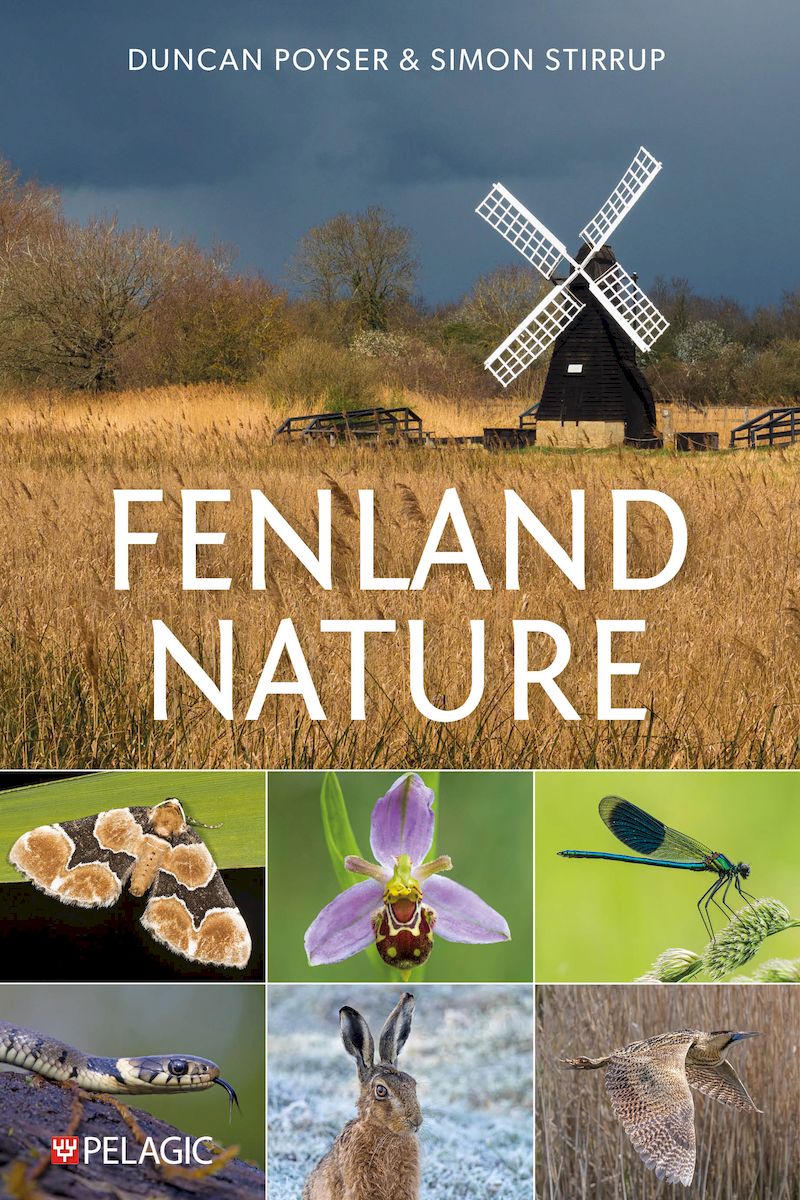Fenland Nature, by Duncan Poyser & Simon Stirrup (Pelagic, 2025) ISBN: 9781784274108 £35
Reviewed by Dr Chris Gibson FBNA
 I have lived and worked in East Anglia for more decades than I care to recall and still I gravitate to the areas of (minor) topographical relief: the coast, the Brecks, the low lines of hills, even the Broads. For me the Fens have always seemed a place of utter, unrelenting, soul-sapping flatness…
I have lived and worked in East Anglia for more decades than I care to recall and still I gravitate to the areas of (minor) topographical relief: the coast, the Brecks, the low lines of hills, even the Broads. For me the Fens have always seemed a place of utter, unrelenting, soul-sapping flatness…
But this book could well cure me and convert me to loving and visiting the Fens rather than simply driving through them on the way to somewhere more interesting. Duncan Poyser’s words and Simon Stirrup’s photos both play a part in this in equal measure, and all in a sturdy, attractive book. My only (minor) criticism about the appearance of the book itself would be a slightly archaic over-reliance on images isolated within a sea of white; more bleeding images would have been appreciated by me! But I fully accept this a matter of very personal preference.
The first seventy pages comprise a very interesting and accessible run through the (pre)history of the region that has shaped the Fenland we now see: essential reading to get under the skin of the place – and of course a salutary lesson about the changes our species has wrought upon the world over the last few centuries.
The next thirty or so pages on fenland ecology cover all taxonomic groups that one could reasonably expect and hope for, without becoming a series of turgid lists, followed by a section on existing sites of wildlife importance and new ones that are being developed. For me, this lacks one thing: a map, to help get a real sense of context.
Then we have about 150 pages, almost half the book, in the form of a series of typically four- to eight-page discursive essays on some aspects of Fenland wildlife, ecology and conservation, based loosely around a particular visit, regrettably again without a map for locational reference. Each is a mini-masterpiece, spinning off from the ostensible focus of the essay into a range of tangential, but clearly related topics. Again, and very commendably, these don’t fall unto the usual trap of equating ‘wildlife’ with ‘birds’.
These essays are told with real flair, and while each stands alone, they have been expertly edited such that they feel part of a greater coherent whole, not just linked thematically. They bring a unique personal touch into the book, by introducing friends, professionals and experts who help interpret the scene before us. And they are informative: I certainly learned things, even things I didn’t know I wanted to learn about.
This is a book I would have loved to have written about my own undervalued area, the Essex Coast. Indeed one we have semi-written, but not published: if ever ours sees the light of day in a package like this, we shall be very proud. It may not be a traditional guidebook (and nowadays, the Internet provides better real-time resources for that) but it is certainly an inspiration.
First published by the British Naturalists’ Association.